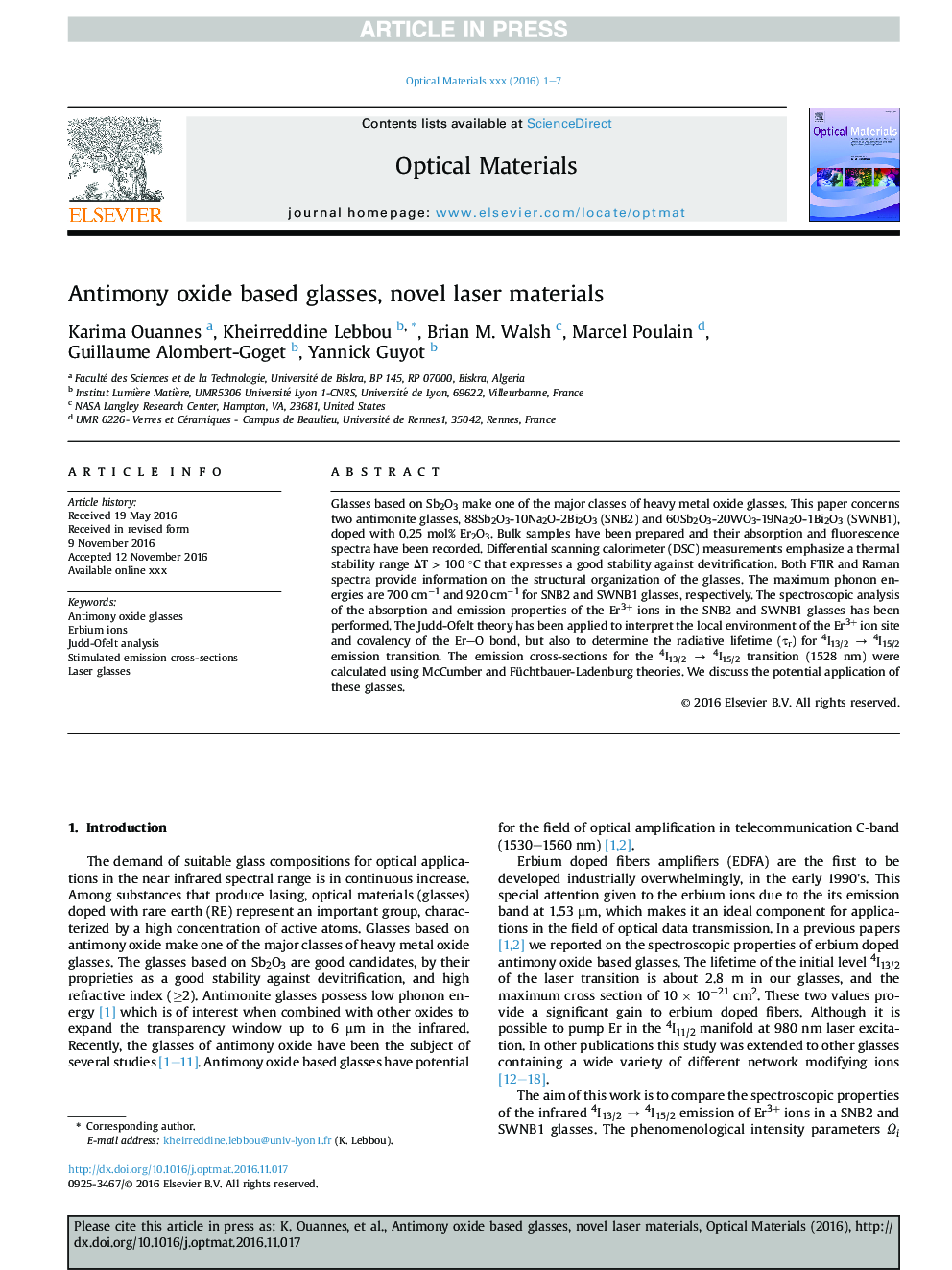| Article ID | Journal | Published Year | Pages | File Type |
|---|---|---|---|---|
| 5442971 | Optical Materials | 2017 | 7 Pages |
Abstract
Glasses based on Sb2O3 make one of the major classes of heavy metal oxide glasses. This paper concerns two antimonite glasses, 88Sb2O3-10Na2O-2Bi2O3 (SNB2) and 60Sb2O3-20WO3-19Na2O-1Bi2O3 (SWNB1), doped with 0.25 mol% Er2O3. Bulk samples have been prepared and their absorption and fluorescence spectra have been recorded. Differential scanning calorimeter (DSC) measurements emphasize a thermal stability range ÎT > 100 °C that expresses a good stability against devitrification. Both FTIR and Raman spectra provide information on the structural organization of the glasses. The maximum phonon energies are 700 cmâ1 and 920 cmâ1 for SNB2 and SWNB1 glasses, respectively. The spectroscopic analysis of the absorption and emission properties of the Er3+ ions in the SNB2 and SWNB1 glasses has been performed. The Judd-Ofelt theory has been applied to interpret the local environment of the Er3+ ion site and covalency of the ErO bond, but also to determine the radiative lifetime (Ïr) for 4I13/2 â 4I15/2 emission transition. The emission cross-sections for the 4I13/2 â 4I15/2 transition (1528 nm) were calculated using McCumber and Füchtbauer-Ladenburg theories. We discuss the potential application of these glasses.
Related Topics
Physical Sciences and Engineering
Materials Science
Ceramics and Composites
Authors
Karima Ouannes, Kheirreddine Lebbou, Brian M. Walsh, Marcel Poulain, Guillaume Alombert-Goget, Yannick Guyot,
